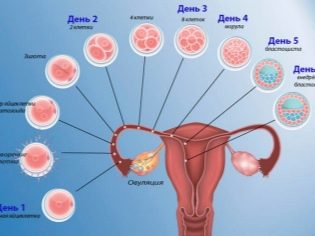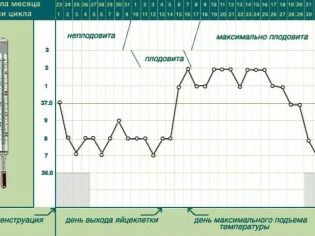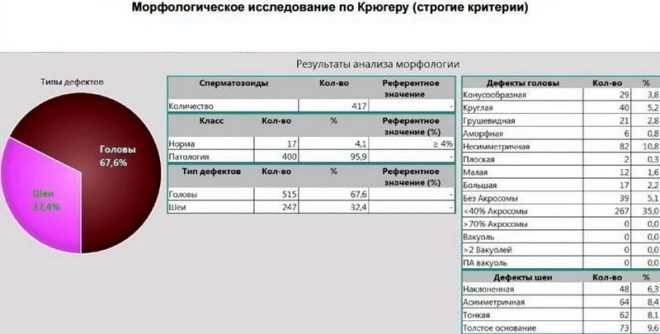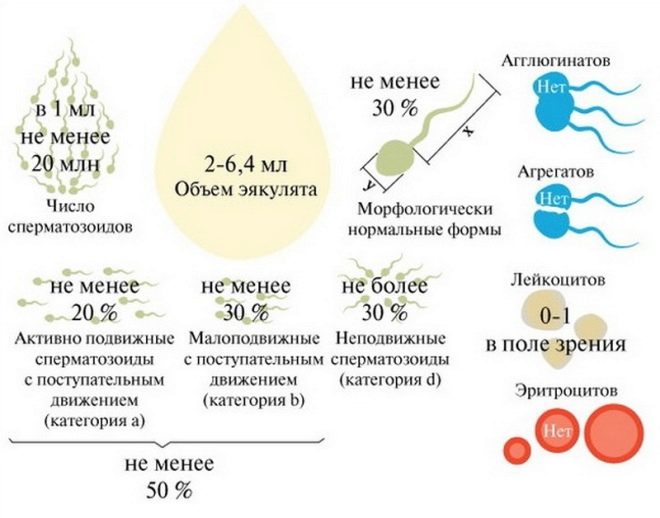Fertility: all about the fertile function of women and men
Procreation issues are considered very important for both women and men. Sooner or later, everyone comes to the fact that they want to take care of children, raise offspring, invest their whole soul in those who remain after you. And here, for the first time, many are confronted with such a term as “fertility”.
What it is?
Fertility is the ability of men and women to procreate. The name of this term comes from the Latin fertilis - fertile, prolific. In simple terms, fertility should be understood as the ability of a man to become a father, and a woman - a mother. If there is no such ability, then they talk about infertility or sterility, in simple words - about sterility.
Fertility in men and women are of three types: high, medium and low.
- High - often this phenomenon qualifies as a natural phenomenon, since partners with a high level of fertility are capable of conceiving a child even despite the contraceptive methods used. Women with high fertility can become pregnant, bear and successfully give birth to children with short breaks between births. Men with a high level of fertility are characterized by increased vitality and motility of sperm, which increases the likelihood of conception.
- Normal - This is fertility, which is written off in the framework of medical standards. A couple can successfully be protected from unwanted pregnancy with the help of contraceptives, but when planning conception they manage to achieve the goal already within 6-12 months.
- Low - these are low reproductive abilities that make it difficult to conceive, bear and give birth to a baby in a woman, conceive a man.
Sometimes without medical care and modern assisted reproductive technologies in this case is not enough.
Fertility is an important term not only for doctors, but also for the whole society as a whole, it is often used by sociologists, experts in the field of economics, demography, statistics, and politics. The birth rate as a macroeconomic indicator is closely linked to the fertility rate of the population. On its basis, calculate the total fertility rate in a particular country.
According to statistics provided by the World Health Organization, up to 5% of women around the world are barren, and 15% of married couples cannot independently conceive a child. In 40% of cases, the cause of infertility lies in the reduction or violation of male fertility, and therefore to assert that only a woman is guilty of the absence of children is a big mistake. In Russia, 40 million women today account for 6 million women with low fertility, with infertility. Among men, the percentage of infertility is up to 4-5% of the total male population.
In the coming years, experts in the field of reproductive health predict a decline in the fertility of men and women of reproductive age, and this is associated with deteriorating environmental indicators, nutrition, stress, and the relocation of people to large cities.
Female
Unlike men, female fertility is shorter. And if the representatives of the stronger sex are capable of fertilization (if they are healthy) on any given day, then in a woman the concept of fertility is closely related to ovulation. Newborn girls have a large stock of immature eggs in their ovaries - this is an ovarian reserve. Part of it will die from the effects of adverse factors, diseases, ecology. The remaining eggs and will provide female fertility.
During the life with the onset of the first menstruation, each month will mature 1 (rarely more) egg. And with each regular menstruation, the ovarian reserve will gradually deplete, and fertility, therefore, decline with age. When the stock of eggs dries out, there will be a climax.
Ovulation occurs in the middle of the cycle. The follicle, which has matured under the hormonal effects, bursts, the oocyte is released, which is ready for a meeting with male sex cells. If this happens, conception will take place and pregnancy will occur. The process of ovulation takes about an hour, and the viability of the egg remains for about a day. This is the peak period of female fertility in one cycle. After the death of the egg, conception and pregnancy are impossible.
Healthy women have anovulatory cycles when ovulation does not occur. In such cycles, you can not get pregnant. Special ovulatory tests that determine the concentration of luteinizing hormone in the urine help determine ovulation, which leads to rupture of the follicle.
The probability of pregnancy in a healthy woman with a normal level of fertility during one cycle is 30% on average. With age, it decreases (at 20 years old - 33%, and at 40 years old - about 3%). This is associated with an increase in anovulatory cycles (1-2 per year in the normal range of 20–35 years, about 6 per year after 35 years), and the deterioration of the quality of the eggs with age.
For each woman, the level of fertility is determined by a special test, which is called the “fertility prognosis”. The test includes two stages: Ultrasound diagnostics and laboratory blood tests for the content of certain hormones.
- Ultrasound of the ovaries is done on the 5-6 day of the menstrual cycle - immediately after the end of menstruation. The size of the follicles, their activity is determined. Set the ovarian reserve.
- Under laboratory conditions, the level of follicle-stimulating hormone (FSH) is determined in a woman’s blood, as well as the level of LH a couple of days before the expected ovulation (mid-cycle).
The result of fertility projection is described in numerical terms:
- «-2» - fertility is low, ovarian reserve is exhausted, natural conception is almost impossible;
- «0» - average, normal egg reserve, normal fertility, a woman is considered able to conceive, bear and give birth to a child without auxiliary actions on the part of doctors;
- «+2» - this means that a woman has increased or high fertility, a large reserve of eggs, a high probability of pregnancy within 1-2 cycles, a high probability of phenomena (pregnancy occurs while taking oral contraceptives or when the intrauterine device is installed).
If the blood test for hormones shows elevated FSH levels and decreased LH, the doctor has every reason to assume that fertility is low. Fertility temperature (if a woman measures the basal temperature) is also important and can be an auxiliary hint for a lady planning a pregnancy, but it does not replace the fertility forecast, since it is much less informative than it is.
It should be understood that low female fertility, as determined by a doctor, is not a sentence at all, condemning a woman to a childless existence. This only suggests that the lady needs treatment, and sometimes assisted reproductive technologies - donor eggs, IVF, stimulation of ovulation by hormones.The need for such technologies, according to statistics, occurs in about 6% of women with low fertility.
The remaining 94% to cope with the problem successfully helps conservative therapy and compliance with the recommendations of the doctor to improve fertile function.
Reproductive female age, when the ability to conceive and give birth to a baby is high, is considered to be from 20 to 49 years old.
Men's
There are many myths about male fertility, but not all of them are true. And the first one concerns the prevalence - someone thought up that women are infertile more often than men. This is not true. But the confidence that “the matter in the wife” often becomes the cause of the neglected cases of male infertility, because the man is not in a hurry to consult a doctor, hoping that the spouse “will somehow solve the problems with conceiving offspring.
If women reproduce mainly due to ovulation, then for men - sperm quality and normal access to their destination. This means that not only sperm should be of high quality, but also the health status of the male reproductive system should not interfere with normal ejaculation.
For a long time it was believed that the main cause of male infertility is impotence. Today, medicine is ready to help even men with a persistent decrease in erection, provided that his spermatozoa are healthy and normal. They can be IVF procedure.
And men with low fertility can lead a full-fledged sex life with normal erection, ejaculation, just conception will be unlikely or impossible.
The only way to check male fertility is sperm analysis for qualitative and quantitative indicators, which is called spermogram. This is an affordable, inexpensive analysis; it is carried out in many clinics in different regions of the country, and there are no problems with examining a man who wants to test his fertility.
For analysis, the semen obtained as a result of masturbation into a sterile container is used. The study is carried out in several stages:
- microscopically establishes the basic properties of sperm - the number of ejaculate, the number of living and mobile cells in it, their morphological features (structure, defects);
- calculated male fertility index.
There are two methods for this - the Krueger method and the Farris method. According to Farris, the number of motile sperm in seminal fluid is calculated. There are four types of sperm: A - elite, active and mobile, moving directly and quickly (active-mobile), B - active, mobile, but moving a little slower than elite type A, C - mobile, but the movement is not directly, on the spot, in a circle, zigzags (non-progressively mobile), D - motionless and non-progressive.
About high fertility in men says the detection of at least 25% of cells of type A, or 50% - the mixed presence of sperm A and B. Other results suggest reduced fertility.
The Krueger index implies an assessment of the morphological properties of male sex cells. Within the framework of such a study, different indicators are determined - the width of the head, the length and shape of the tail, its bend. A fertile man without reproductive problems in semen has between 25-30% absolutely healthy, reference sperm.
The detection of at least 15% of such cells indicates the average fertility, and less than 15% about the low ability to reproduce. Kruger criteria are very strict. They do not pass the sex cells, which have even minor defects of the head, neck, tail. In this case, the index is determined in numerical terms and is proportional to the probability of fertilization.
If, according to Kruger, it turned out to be 10%, then the probability of fertilizing a mature female reproductive cell in the sperm of a particular man is about the same.
In general, the sperm scores for a healthy man are:
- volume - not less than 2 ml;
- viscosity - no more than 2 centimeters;
- turbidity - positive or “+”;
- red blood cells - absent;
- leukocytes - missing or not more than 0.3;
- slime - missing;
- liquefaction time - from 10 to 40 minutes;
- acidity – 7,1 -8;
- sperm count - more than 40 million;
- active sperm - not less than 25%;
- fixed sperm - no more than 50%;
- with normal morphology - over 30%;
- aggregation - missing;
- antisperm antibodies - absent.
Any abnormalities in the semen must be evaluated by a physician.
Besides this analysis, a man needs to be examined by a urologist, and sometimes an endocrinologist's consultation, if, for example, there are problems with the production of testosterone.
Male fertility is more stable and long lasting than female. Theoretically, boys are already capable of fertilization from puberty to very old age, because new germ cells are constantly being developed throughout life. Of course, sperm quality deteriorates with age but in itself the age factor for a man does not exist - he can easily become a father at 50 and at 70 years old.
The similarity of female and male fertility lies in the hormonal support of the reproductive system. Over the years, the hormones needed for the reproduction of both men and women produce less, which necessarily affects the functioning of the sex glands. For men, the decline in fertility for hormonal reasons is indicated by a decrease in libido, a decrease in muscle mass, an increased incidence of erectile dysfunction, fat deposition, and baldness.
According to statistics, the male reproductive age is the range from 12 to 65 years. However, after 55 years, the chances of fertilization are reduced along with a decrease in sperm characteristics. But the lack of an erection, which many consider the main obstacle to conception, has nothing to do with it. A 65-year-old man can also become a decent sperm donor, even if he has not had a libido and an erection for a long time and is not able to have a full-fledged sexual intercourse.
The medicine is also ready to offer the representatives of the stronger sex a variety of methods for increasing fertility, and in the majority, fertility is restored by conservative methods, only a small percentage of men to become fathers need methods such as IVF, ICSI. Even if a man does not have a single motile sperm cell, doctors have the opportunity to extract DNA from the immobile in order to enter the egg cell.
Modern methods of reproductive assistive technology help to solve the problem in the vast majority of even severe cases of male infertility.
Causes of decline and violation
In the people, low reproductive abilities are automatically called decline or impairment, without going into the nuances of terminology. In fact, a temporary and reversible decrease in reproductive abilities in men and women is a decrease in fertility, but the inability to conceive, bear and give birth, irreversible and not subject to correction - this is a violation of fertility. And the tactics of the doctors in both cases will be different.
It should be noted that fertility is a rather fragile phenomenon, and a wide variety of adverse factors can affect it in both the stronger sex and women. We list the main ones.
- Age - A factor that is important mainly for the female half of humanity. As we already know, the fertility of women will fade away with the depletion of the ovarian reserve. Men are less susceptible to this factor and retain fertile abilities longer. However, with age, partners of both sexes are more likely to mutate genetic information, which is enclosed in germ cells. Therefore, age parents are more likely to have children with chromosomal abnormalities — Down syndrome, Turner syndromes, neural tube defects, etc.
- Weight - a factor that equally affects both sexes.Extra pounds cause hormonal imbalances and metabolic failures. In women with obesity or overweight, the processes of ovulation are disrupted, in men with the same problem, testosterone production decreases, which becomes noticeable in the growing mammary glands and a decrease in sexual desire. It is proved that even weight loss by partners by 5% of the total mass contributes to a more rapid successful conception of offspring.
- Stress, psychological and emotional distress - nervous or psychogenic factor significantly affects the process of spermatogenesis in men and the ovulatory processes in women. Stress hormones partially block the production of sex hormones, and therefore, against the background of long-term chronic stress, the most intractable form - psychogenic sterility often develops. The reasons for it may even lie in the fact that the partners in the depths of their hearts do not want children, are afraid of responsibility, and here medicine, as they say, is powerless.
- Medication intake - for women, it is considered undesirable to take hormones and painkillers during ovulation. It is believed that these drugs can disrupt the natural course of the ovulatory process and reduce the quality of oocytes. For men, antibiotics and steroid hormones are especially dangerous. Many people are addicted to sports or to regulate body weight. They violate the morphology of male germ cells.
- Diseases associated with hormonal disorders - this includes diabetes, polycystic ovary in women, problems with the functioning of the thyroid gland in men and women.
- Infectious diseases - This should include genital infections, genital herpes. Even ordinary flu and acute respiratory viral infections are dangerous for men because they are associated with high fever, which adversely affects the state of spermatogenesis. However, this fertile decline is temporary, and within 3 months the spermogram usually returns to normal.
- Inflammatory diseases of the genital organs. In men, it means prostatitis, urethritis, in women - inflammatory diseases of the uterus, appendages, vagina, tubes.
- Non-inflammatory diseases of the reproductive organs. In women, fibroids, cysts, polyps, endometriosis, in men, varicocele, prostate adenoma, and other disorders not associated with inflammation.
- Bad habits - Smoking, alcohol, drugs reduces the characteristics of sperm in men, oocytes - in women. Long-term use of nicotine or alcohol causes DNA mutations, which increases the likelihood of having a child with anomalies. Spermatogenesis in men is strongly affected by kanabiods, and therefore smoking marijuana causes irreparable damage to reproductive health.
- Working conditions, occupational hazards - exposure to vibration, radiation, contact with varnishes, paints, chemicals, nitrates and nitrites significantly increases the risk of not only reducing fertility, but also its early extinction. For the normal functioning of the reproductive system, both men and women have a good night’s sleep, and therefore night shift work is also considered a risk factor for the development of infertility.
- Eating disorder - the habit of eating fast food, drinking large amounts of soda, an abundance of products with preservatives and dyes not only leads to metabolic disorders and excess weight, but also detrimental effect on the morphology of spermatozoa, as well as on the hormonal background of women.
- Environmental factor - a very important, often underestimated factor. The larger and more gassed the city in which the couple lives, the higher the likelihood of difficulties in conceiving offspring. Sometimes couples can simply take a vacation for a few weeks and leave the country, and the problem is solved by itself.
- Immunological disorders - This is a large list of immunity disorders, in which women and men produce antisperm antibodies in their bodies, which perceive spermatozoa as an alien object and destroy them.
This is possible if a woman practiced anal sex with ejaculation in the rectum, with oral sex with sperm entering the digestive tract.
They say about fertility decline if a couple who are at the optimum age cannot become pregnant naturally during the year, provided that the woman is not more than 35 years old. If a lady is older than 35 years old, then fertility reduction calls fruitless attempts to conceive a baby within six months. In both cases, after the expiration of these periods, you need to consult a doctor.
Both partners must do this. This will help to quickly identify the fertile prognosis for each of them, identify problems, causes, eliminate them.
Ways to increase fertility
Most men and women can achieve optimal fertility, if you follow the basic recommendations of the doctor. Examination is required. It is necessary to cure all infections, inflammations, otherwise all attempts to conceive a child may remain ineffective.
Women and men who are generally healthy and ready to plan a pregnancy are recommended:
- to have sex regularly, at least twice a week, not to use any means of contraception, to refuse lubricants, lubricants, change of partner is not welcome;
- abandon a diet aimed at weight loss (we are talking about any diet that involves eating low calories, mono-diet), be sure to eat meat, fish, milk, vegetables and fruits;
- give up bad habits a few months before planning a pregnancy - quitting smoking, for example, increases the chances of conception by 15%;
- start taking vitamins (important folic acid, vitamins of group B, ascorbic acid, magnesium, zinc, selenium are of particular importance for men);
- abandon excessive exhausting physical exertion, but fill life with adequate daily loads, for example, walk more, walk in the fresh air, ride a bicycle;
- eliminate the use of coffee, strong tea and other products with a high content of caffeine;
- with the permission of a doctor, you can take dietary supplements to increase fertility - “Ovariamin”, “Pregnoton” for women, “SpermActive”, “Viardot” for men, herbs that improve the quality of sperm and oocytes;
- without the permission of the doctor and his appointment is prohibited to take any hormonal, antibacterial and painkillers;
- men should avoid wearing tight linen, heating the scrotum.
Given that the new egg matures monthly, and spermatogenesis lasts up to 90 days, it is worth taking care to observe such measures 3-4 months before the intended conception.
About what a couple fertility, see the following video.

































